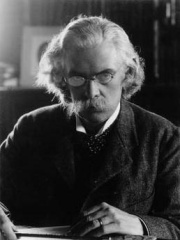
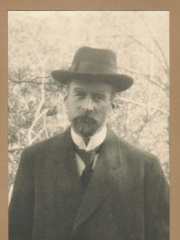
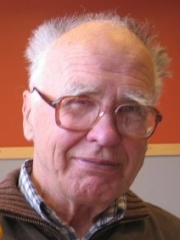
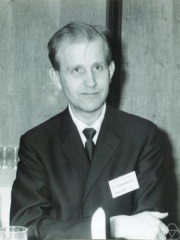
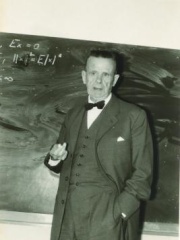
The Most Famous
MATHEMATICIANS from Sweden
This page contains a list of the greatest Swedish Mathematicians. The pantheon dataset contains 823 Mathematicians, 6 of which were born in Sweden. This makes Sweden the birth place of the 25th most number of Mathematicians behind Romania and Denmark.
Top 6
The following people are considered by Pantheon to be the most legendary Swedish Mathematicians of all time. This list of famous Swedish Mathematicians is sorted by HPI (Historical Popularity Index), a metric that aggregates information on a biography’s online popularity.

1. Gösta Mittag-Leffler (1846 - 1927)
With an HPI of 60.82, Gösta Mittag-Leffler is the most famous Swedish Mathematician. His biography has been translated into 32 different languages on wikipedia.
Magnus Gustaf "Gösta" Mittag-Leffler (16 March 1846 – 7 July 1927) was a Swedish mathematician. His mathematical contributions are connected chiefly with the theory of functions, which today is called complex analysis. He founded the most important mathematical periodical Acta Mathematica and was its editor for 40 years. He took great trouble and procured Sofia Kovalevskaya a position of full professor of mathematics in Stockholm University. Also, Mittag-Leffler was responsible for inducing the Nobel committee to recognize and award Marie Curie as an equal contributor to the discoveries ‘on the radiation phenomena’ along with her husband Pierre Curie. After World War I, Mittag-Leffler gave his estate in Djursholm and its remarkable library of books on mathematics to the Royal Swedish Academy of Sciences; it became the foundation of the modern Mittag-Leffler Institute.

2. Helge von Koch (1870 - 1924)
With an HPI of 56.61, Helge von Koch is the 2nd most famous Swedish Mathematician. His biography has been translated into 25 different languages.
Niels Fabian Helge von Koch (25 January 1870 – 11 March 1924) was a Swedish mathematician who gave his name to the famous fractal known as the Koch snowflake, one of the earliest fractal curves to be described. He was born to Swedish nobility. His grandfather, Nils Samuel von Koch (1801–1881), was the Chancellor of Justice. His father, Richert Vogt von Koch (1838–1913) was a Lieutenant-Colonel in the Life Guards of Horse of the Swedish Army. He was enrolled at the newly created Stockholm University College in 1887 (studying under Gösta Mittag-Leffler), and at Uppsala University in 1888, where he also received his bachelor's degree (filosofie kandidat) since the non-governmental college in Stockholm had not yet received the rights to issue degrees. He received his PhD in Uppsala in 1892. He was appointed professor of mathematics at the Royal Institute of Technology in Stockholm in 1905, succeeding Ivar Bendixson, and became professor of pure mathematics at Stockholm University College in 1911. Von Koch wrote several papers on number theory. One of his results was a 1901 theorem proving that the Riemann hypothesis implies what is now known to be the strongest possible form of the prime number theorem. He described the Koch curve in a 1904 paper entitled "On a continuous curve without tangents constructible from elementary geometry" (original French title: "Sur une courbe continue sans tangente, obtenue par une construction géométrique élémentaire"). He was an invited speaker at the International Congress of Mathematicians in 1900 in Paris with talk Sur la distribution des nombres premiers and in 1912 in Cambridge, England, with talk On regular and irregular solutions of some infinite systems of linear equations.

3. Lennart Carleson (1928 - )
With an HPI of 52.79, Lennart Carleson is the 3rd most famous Swedish Mathematician. His biography has been translated into 30 different languages.
Lennart Axel Edvard Carleson (born 18 March 1928) is a Swedish mathematician, known as a leader in the field of harmonic analysis. One of his most noted accomplishments is his proof of Lusin's conjecture. He was awarded the Abel Prize in 2006 for "his profound and seminal contributions to harmonic analysis and the theory of smooth dynamical systems."

4. Lars Hörmander (1931 - 2012)
With an HPI of 52.48, Lars Hörmander is the 4th most famous Swedish Mathematician. His biography has been translated into 33 different languages.
Lars Valter Hörmander (24 January 1931 – 25 November 2012) was a Swedish mathematician who has been called "the foremost contributor to the modern theory of linear partial differential equations".[1] Hörmander was awarded the Fields Medal in 1962 and the Wolf Prize in 1988. In 2006 he was awarded the Steele Prize for Mathematical Exposition for his four-volume textbook Analysis of Linear Partial Differential Operators, which is considered a foundational work on the subject. Hörmander completed his Ph.D. in 1955 at Lund University. Hörmander then worked at Stockholm University, at Stanford University, and at the Institute for Advanced Study in Princeton, New Jersey. He returned to Lund University as a professor from 1968 until 1996, when he retired with the title of professor emeritus.
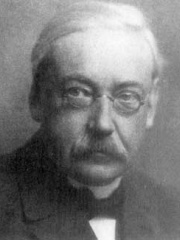
5. Erik Ivar Fredholm (1866 - 1927)
With an HPI of 51.25, Erik Ivar Fredholm is the 5th most famous Swedish Mathematician. His biography has been translated into 24 different languages.
Erik Ivar Fredholm (7 April 1866 – 17 August 1927) was a Swedish mathematician whose work on integral equations and operator theory foreshadowed the theory of Hilbert spaces.

6. Harald Cramér (1893 - 1985)
With an HPI of 46.14, Harald Cramér is the 6th most famous Swedish Mathematician. His biography has been translated into 21 different languages.
Harald Cramér (Swedish: [kraˈmeːr]; 25 September 1893 – 5 October 1985) was a Swedish mathematician, actuary, and statistician, specializing in mathematical statistics and probabilistic number theory. John Kingman described him as "one of the giants of statistical theory".
Pantheon has 6 people classified as mathematicians born between 1846 and 1931. Of these 6, 1 (16.67%) of them are still alive today. The most famous living mathematicians include Lennart Carleson. The most famous deceased mathematicians include Gösta Mittag-Leffler, Helge von Koch, and Lars Hörmander.
Living Mathematicians
Go to all RankingsDeceased Mathematicians
Go to all Rankings
Gösta Mittag-Leffler
1846 - 1927
HPI: 60.82
Helge von Koch
1870 - 1924
HPI: 56.61
Lars Hörmander
1931 - 2012
HPI: 52.48
Erik Ivar Fredholm
1866 - 1927
HPI: 51.25
Harald Cramér
1893 - 1985
HPI: 46.14

Which Mathematicians were alive at the same time? This visualization shows the lifespans of the 5 most globally memorable Mathematicians since 1700.





